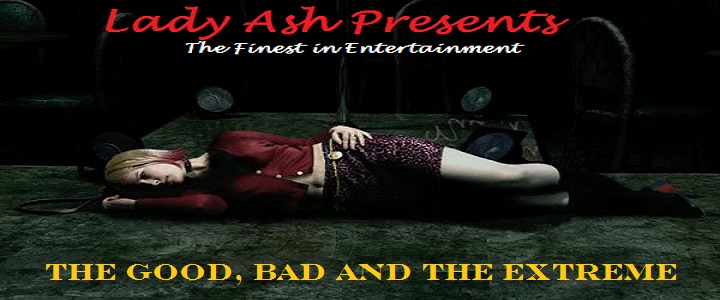
Lucio Fulci is one of the names most synonymous with Italian Horror. Many regard Fulci, alongside Herschell Gordon Lewis, as one of the genre's legendary "godfathers of gore"; he was behind the creation of such grotesque masterpieces as City of the Living Dead and the infamous Zombi 2. However, there is a different side of Fulci that many of his gorehound fans are not aware of; he also managed to establish himself as a master of suspense. Before he got around to flashier, more boisterous fare, Fulci co-wrote and directed a few films in the giallo subgenre including such titles as Don't Torture a Duckling and Lizard in a Woman's Skin. One of the projects under his belt is a little film from 1977 titled Seven Notes in Black, released in the U.S. as The Psychic. Many might know this film only for the infamous theme quoted by Quentin Tarantino in Kill Bill, Volume 1, but this film is more than just a seven-note chime.
Virginia (Jennifer O'Neill) has had a number of psychic visions ever since the day, almost twenty years ago, when she "saw" her mother committing suicide. On a morning drive through the countryside, a terrifying series of images enters her head; recounting them for a close friend, a parapsychologist named Luca (Marc Porel), she becomes convinced that she has been a supernatural witness to a gruesome murder. While her husband Francesco (Gianni Garko) is off on business, Virginia is seeing to the restoration of an old house that's been in his family for years; her suspicions are aroused when she enters the house and stumbles on what may be the scene of the crime itself.

What makes The Psychic such a unique film is its atmosphere. This is neither your typical giallo nor your typical Lucio Fulci movie. Unlike Bava or Argento, who are well known for the array of eye-catching color in their films, Fulci has painted a canvas of grim darkness; the director went for a stripped-down, no-B.S. aesthetic in making The Psychic. You have none of the flashy, eye-gouging gore effects of Zombi 2, except for a brief pre-credits sequence; here the horror is more cerebral than visceral. Fulci doesn't find it necessary to throw blood and entrails all over the place in this film, and so his genius for nauseating effects is sublimated into suspense. The film's most terror-inspiring moments are not the scenes of violence, but the disconnected, surreal images of Virginia's vision, relentlessly repeating themselves in her (and the viewer's) mind's eye. A room decorated in blood-red satin, a letter hidden under a sculpture, a broken mirror, a cigarette smoldering in an ashtray, footsteps on an unfamiliar stairway, a music box (or something like it) repeating a seven-note motif in complete darkness... even the images that do not directly suggest violence seem to contain a subtle threat.

And where most giallo films add extravagant staging, beautiful women and carefully disguised killers, Fulci breaks the mold again, most notably with his heroine. While Jennifer O'Neill is the definition of a beautiful woman, her Virginia is not the typical giallo helpless-victim-of-circumstance. Sure, she has a vulnerable side, but she is bright, intelligent, and fully aware that she is treading in dangerous waters; she also turns amateur detective with more gusto than some other giallo protagonists -- twenty minutes into the film, we find her hacking away at a wall with a pickaxe, searching for a body that she is convinced is buried there.
Unlike its predecessors, there is no classy, sly psycho killer in this film, donning a trenchcoat and black leather gloves, stacking up the bodies. Fulci has not created a slasher film (the sort of thing one might reasonably expect from him), but a detective story with all the intricacy of a jigsaw puzzle. Every detail revealed is vital to the story; the most satisfying -- and horrific -- moments of the film come when those details are connected together. Throughout the film, the evidence seems to indicate that whatever Virginia saw may not be what she thought she saw; practically every clue available to her turns out to mean something other than its initial interpretation. During the final third of the movie, each of the clues slowly locks into place in the real world, the editing slyly revealing the context of each fragmentary image. The tension mounts to an almost unbearable level, and the final ten minutes that cap it off are among the most nerve-wracking in any giallo.

Of course this exhilarating visual concoction could not be complete without mentioning the music that brings this film to life. Fabio Frizzi is known for the eerie and hypnotic scores he created for Zombi 2, City of the Living Dead and The Beyond. Frizzi's collaboration with Franco Bixio and Vince Tempera on the score for The Psychic is nothing short of musical perfection. Their composition is the backbone of the film's suspenseful set pieces. The seven-note loop that materializes periodically is one of the most chilling sounds to grace the ears of the listener since Bernard Herrman's infamous musical sting in Psycho.
The Psychic is a superb thriller, worthy of standing beside such classics as Deep Red and Blood and Black Lace. It may even be argued that Lucio Fulci's skill at generating tension, not notable elsewhere, is brought front and center in his gialli; in retrospect, one can understand why some have accused Fulci of using gore as a crutch. Not so in this case. Those who are interested in nail-biting suspense will find much to enjoy here.

No comments:
Post a Comment